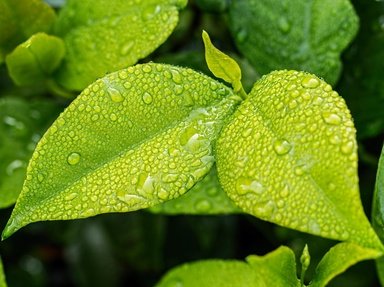Quiz Answer Key and Fun Facts
1. In full bloom at the beginning of the spring wildflower season within the Grampians is the golden wattle, the floral emblem of Australia. Having the botanical species name pycnantha, to which genus does this plant belong?
2. While the wildflower display in Western Australia has the more widely known and cultivated endemic shrub species ___ saxicola, it pales in comparison to the showy species endemic to the Grampians known as ___ calycina. What genus fills the blank for both of these plants?
3. The appeal of many plants is often more than just a visual one. The indigenous peoples that inhabited the Grampians used the flowers of Acrotriche serrulata to brew a sweet refreshing beverage that reflects what common name given to this species?
4. Although being the floral emblem of Victoria, Epacris impressa can be found in many mainland states as well as Tasmania. The variety of this same species known as 'grandiflora' however is endemic to the Grampians and is therefore commonly known as what?
5. A large number of Australian native genuses are members of the Myrtaceae family and are well represented with many species growing within the Grampians. Surprisingly though, the scarlet bottlebrush is the only species of which Myrtaceae genus to be found there?
6. You might not think so, but the eighth day of Christmas is too late to see this spring flowering perennial of the Colchicaceae family. Growing from a corm and producing dainty white flowers, what is the common name of Burchardia umbellata?
7. Brilliant displays of spring and summer colour can be seen from the flowers of this genus. Species found within the Grampians include ___ continentale, ___ scoparium and the endemic ___ turbinatum. Commonly known as tea-trees, and not to be confused with the similarly named Melaleuca species, to which genus do they belong?
8. A common sight spreading throughout the heathland areas of the Grampians, Kennedia prostrata is also a popular choice as a groundcover in domestic native gardens. If Cliff Clavin ever got off his barstool and visited the Grampians, this might be his favourite plant considering it has what common name?
9. In 1893, a lone specimen of a new species was discovered in the Grampians and given the botanical name Grevillea williamsonii. What act of nature four years later in 1897 totally destroyed this specimen, leading to fears of the extinction of this newly discovered species?
10. A common sight in the Grampians, Calectasia intermedia was once a victim of mistaken identity. While still retaining its common name of blue tinsel-lily, its botanical name was changed from that of which other blue tinsel-lily that is now confirmed as being endemic to Western Australia?
Source: Author
Aussiedrongo
This quiz was reviewed by FunTrivia editor
CellarDoor before going online.
Any errors found in FunTrivia content are routinely corrected through our feedback system.
